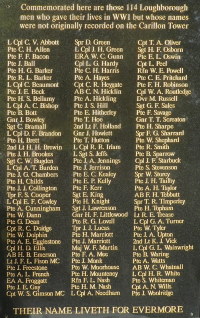The Carillon Tower was designed by Walter Tapper in 1921 and building started the next year. The ground floor section was constructed from Portland stone up to a height of 16 feet, the middle section was built of red brick with stone dressings around the windows and the upper section was copper clad wood.
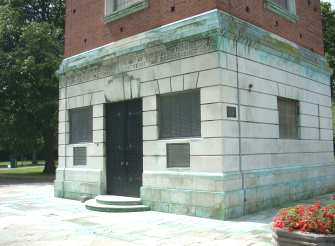
Bronze plaques, or tablets, were placed at ground floor level on the outside of the Carillon, to commemorate the men of Loughborough who died in World War One. Plaques for World War Two and other plaques were added later.
Those commemorated on these plaques are also listed, together with biographical details and photographs where they are available, on the Loughborough Roll of Honour website.
Memorial Plaques (click each to enlarge)
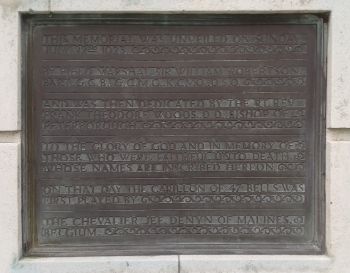
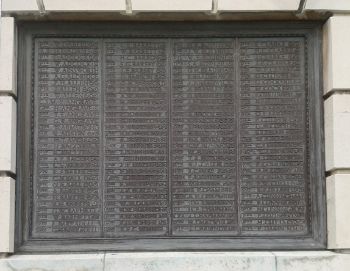
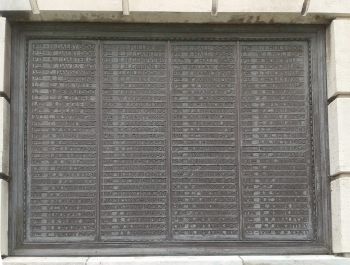
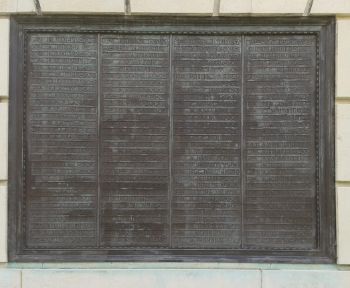
WW1 Dedication
WW1 Tablet 1
WW1 Tablet 2
WW1 Tablet 3
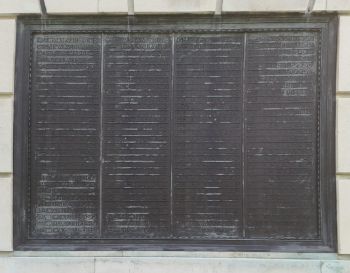
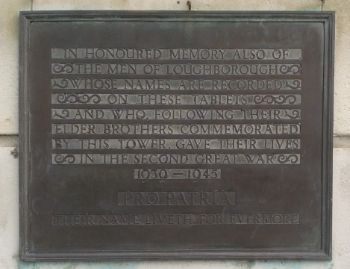
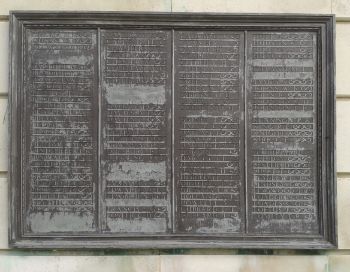
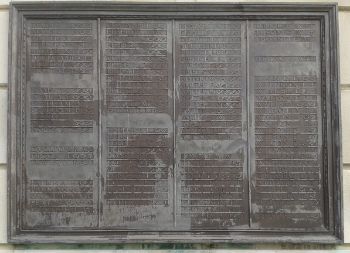
WW1 Tablet 4
WW2 Dedication
WW2 Tablet 1
WW2 Tablet 2
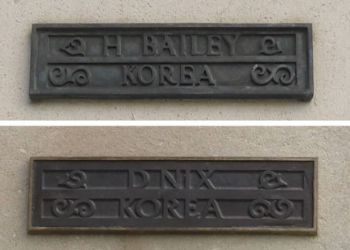
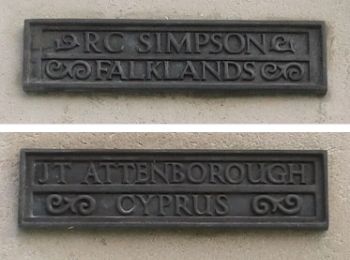
Korean War
Cyprus and Falkland Islands
Missing Names
In 2018 an appeal was launched to raise funds to create an additional memorial following the discovery, by Carillon Principal Researcher Marigold Cleeve, of 114 names that had not been included in the original WW1 plaques. The new memorial was mounted inside the Carillon, on the ground floor.
Additional 114 WW1
names added in 2018.
names added in 2018.

Some local companies, workmates and family members paid to have a carillon bell inscribed to the memory of a fallen colleague or relative, as described in "The Bell Chamber and Balcony" section. A full list of the inscriptions is given in the Loughborough Roll of Honour website.
The 'Death Penny'
The next of kin of fallen servicemen in the First World War were sent a bronze plaque in commemoration of their kinsman. The plaques, which were 4.5 inches across (11.4cm), were the result of a competition for the design. Not surprisingly they were not always welcome and became known as the 'Death Penny' because of their supposed similarity to a penny coin of the day.
The museum has several examples and the one shown on the right is dedicated to Albert Stockwell, a Corporal in the Leicester Regiment, who died on the Somme in 1916.

